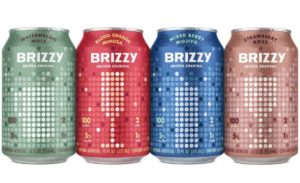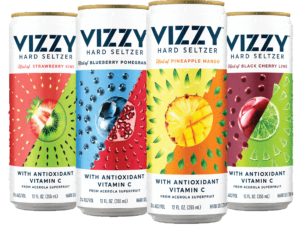Who Can Use the Names of Defunct Sports Teams: Residual Goodwill and Trademark Abandonment
By Patrick Mulkern on April 26, 2024
Leave a comment
Trademarks are, of course, source identifiers. They are intended to be used to identify a particular source of a particular good or service. But what happens if the source no longer exists, yet consumers are still aware of the original source? Who, if anyone, can adopt that mark? As with so much in the law, it turns out the answer is simple: it depends.
A. Court Decisions Regarding Former Team Names
1. Brooklyn Dodgers (MLB)
The Brooklyn Dodgers were one of the original baseball teams in Major League Baseball (“MLB”), playing in New York from 1883 until 1958—when they moved to Los Angeles and became the Los Angeles Dodgers. In 1993, the LA Dodgers and MLB sued a New York sports bar—operating as The Brooklyn Dodger Sports Bar and Restaurant since 1987—for trademark infringement. See Major League Baseball Properties, Inc. v. Sed Non Olet Denarisu, Ltd., 817 F.Supp. 1103, 1131 (S.D.N.Y. 1993), vacated pursuant to settlement, 859 F.Supp. 80 (S.D.N.Y. 1994).
After a bench trial, the court found no likelihood of confusion but also found in favor of the defendant’s affirmative defense of abandonment. Noting that a finding of abandonment requires evidence of both (a) non-use and (b) lack of intent to resume use, the court determined the LA Dodgers had neither (a) continued their use following their move from New York to LA nor (b) established any intent to resume commercial use of the mark. The court rejected any suggestion that “residual goodwill” existed in the Brooklyn Dodger’s name because, according to the court, such residual goodwill only exists where “the proponent of a mark stops using it but demonstrates an intent to keep the mark alive for use in resumed business.” Here, the Dodgers had “unequivocally” declared their intent to discontinue use.
Presumably in light of the potential financial impact such an abandonment finding would have on the LA Dodgers and MLB’s licensing activities (which the court observed had grown from $200 million in 1986 to over $2 billion in 1991), the parties quickly settled, and the order was vacated pursuant to that settlement agreement.
2. Baltimore Colts (NFL)
Following the trend of controversial moves, the Baltimore Colts were a National Football League (“NFL”) team from 1953 until their sudden and secretive move to Indianapolis in 1983. Years later, the Indianapolis Colts sued a Canadian Football League team looking to play in Baltimore as the “Baltimore CFL Colts.” See Indianapolis Colts, Inc. v. Metropolitan Baltimore Football Club Ltd. P’ship, 34 F.3d 410 (7th Cir. 1994). The Seventh Circuit Court of Appeals observed that the district court held the old “Baltimore Colts” name had been abandoned (but neither agreed nor disagreed) and remarked that “when a mark is abandoned, it returns to the public domain and is appropriable anew—in principle.” Indianapolis Colts, 34 F.3d at 412 (emphasis added). This “in principle” was a major caveat, as the district court had found a high likelihood of confusion during the preliminary injunction briefing due to the striking similarity between the names “Baltimore Colts” and “Indianapolis Colts.” The Seventh Circuit affirmed this finding, in part, because of the confusion resulting “by virtue of the history” of the Indianapolis Colts franchise. Id. at 413 (emphasis added). In affirming, the Seventh Circuit expressly rejected the Brooklyn Dodgers decisions discussed above, noting how that dispute was between a restaurant and a baseball team so there was no real risk of confusion.
B. Potential Impact on Extant Registrations
In Brooklyn Dodgers, the court found the team had abandoned its former name because there was insufficient evidence of any intent to resume using the old name in commerce. It also rejected any impact of lingering goodwill (i.e., consumer awareness and association) in the original Brooklyn Dodgers moniker. In Baltimore Colts, the appellate court agreed there was a likelihood of confusion, despite the apparent abandonment of the former name, specifically because of the “history” of the senior user’s franchise. The fact that Brooklyn dealt with a restaurateur versus an MLB team, whereas Baltimore dealt with an NFL team versus a CFL team, seems to be a major distinction.
So what, then, should become of existing registrations for other defunct teams?
1. Montreal Expos (MLB)
The Montreal Expos were a professional baseball team from 1969 until 2004. The Expos logo was registered as Reg. No. 1,873,010 in 1995 for use in connection with a variety of classes, including keychains, mugs, clothing, toys, and “entertainment services in the nature of baseball exhibitions.” In 2004, the team moved to Washington, D.C., and became the Washington Nationals. The registration, however, remains valid and subsisting—owned, interestingly, by Major League Baseball. In both 2005 and 2015, one and eleven years, respectively, after the team moved, specimens were filed for Section 8 and 9 renewals showing a keychain. These were accepted as evidence of use for all classes.
2. Seattle Supersonics (NBA)
The Seattle Supersonics were a National Basketball Association (“NBA”) team from 1967 until 2008. The Supersonics logo was registered at TM Reg. No. 1,831,387 in 1994 for use in connection with both clothing goods and “entertainment services; namely, basketball competitions.” In 2008, the team moved to Oklahoma City and became the Oklahoma City Thunder. Like the Expos, the Supersonics registration remains valid and subsisting. In 2013, five years after the team relocated, a specimen including a screenshot of a www.NBA.com webpage displaying a video of a 1979 Supersonics game was submitted and accepted for all classes as evidence of the use of the mark in connection with clothing and basketball games.
* * *
At least as of their 2015 renewal, the Expos had not played a game as the Expos in over a decade. Yet, the U.S. Patent and Trademark Office (“PTO”) was not keen to analyze the specimen too closely—for it certainly does not demonstrate use in connection with playing actual baseball games. Similarly, as of the 2013 renewal, the Supersonics had not played a game as the Supersonics in five years, but, again, the PTO did not examine the specimen and accepted it for all classes.
The matter of registration stands apart from the question of whether use by a third-party junior user would be tolerated. Residual goodwill—continued consumer association with either mark after abandonment—is likely to be more significant in a potential infringement scenario, especially concerning the likelihood of confusion analysis, akin to the Baltimore Colts case.



 On September 1, 2019, Future Proof launched “Brizzy,” a seltzer cocktail offering consumers a refreshing alcoholic beverage with only 100 calories, 2 carbs, 1 gram of sugar and 5% alcohol by volume. Brizzy flavors include Watermelon Mule, Strawberry Rose, and Mixed Berry Mojito. Future Proof applied to register the Brizzy mark with the USPTO in November 2018. Originating in Austin, Texas, the products can now be found in over 1,000 retail locations in four states with plans to expand into more states this year.
On September 1, 2019, Future Proof launched “Brizzy,” a seltzer cocktail offering consumers a refreshing alcoholic beverage with only 100 calories, 2 carbs, 1 gram of sugar and 5% alcohol by volume. Brizzy flavors include Watermelon Mule, Strawberry Rose, and Mixed Berry Mojito. Future Proof applied to register the Brizzy mark with the USPTO in November 2018. Originating in Austin, Texas, the products can now be found in over 1,000 retail locations in four states with plans to expand into more states this year. Molson Coors’s hard seltzer, “Vizzy,” is advertised as “the only hard seltzer with antioxidant Vitamin C.”2 It similarly offers 100 calories, 2 carbs, 1 gram of sugar and 5% alcohol by volume. In September 2019, Molson Coors filed an application to register the Vizzy trademark. Vizzy flavors include “hint of” pineapple mango, black cherry lime, blueberry pomegranate, and strawberry kiwi.
Molson Coors’s hard seltzer, “Vizzy,” is advertised as “the only hard seltzer with antioxidant Vitamin C.”2 It similarly offers 100 calories, 2 carbs, 1 gram of sugar and 5% alcohol by volume. In September 2019, Molson Coors filed an application to register the Vizzy trademark. Vizzy flavors include “hint of” pineapple mango, black cherry lime, blueberry pomegranate, and strawberry kiwi.

